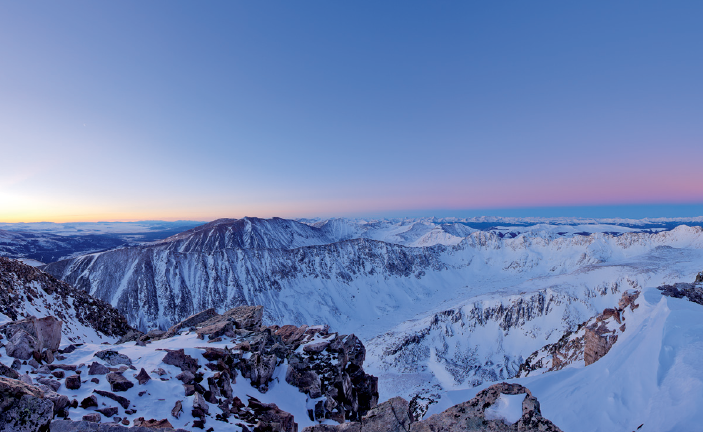Visual Peak Experiences in Photography March 17, 2015 – Posted in: Photography – Tags: colorado, glenn randall, landscape photography, peak experiences, Photography
My husband is obsessed with “views.” Any and all types of views will suffice; views of mountains, the ocean, rivers, lakes, snowy peaks, meadows full of wildflowers, wooded areas of molting autumnal foliage, desert dunes spotted with hearty wasteland twigs that seem to sprout from the sand, even a nice wide-view cityscape will satisfy. He climbs peaks and forges through valleys, all in search of these views—a vision of the world that offers perspective and natural beauty; a sense of what the wild world looked like before the human race populated all over the face of it.
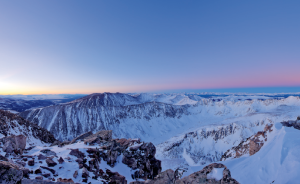 Quandary Peak, Tenmile Range, near Breckenridge, Colorado. Photo by Glenn Randall.
Quandary Peak, Tenmile Range, near Breckenridge, Colorado. Photo by Glenn Randall.
The benefit of seeking such views had to be expounded to me; the most dramatic peak I’ve ever hiked is Coit Tower in San Francisco. The view from Coit, while impressive, isn’t inaccessible: it can be seen from a postcard. Cityscapes represent a different aspect of our existence than glimpses of the remote splendor of the natural world. In his new book, The Art, Science, and Craft of Great Landscape Photography, author Glenn Randall refers to these views—the very instants of viewing these sights—as visual peak experiences: moments of extraordinary natural beauty that elicit a sense of awe in the viewer. Every inch of the Earth offers unique and specific sights that are constantly changing with the weather, the season. These visual peak experiences are always new, yet always timeless. They exist now in a way that may never occur again, but they exist infinitely in a way that represents everything that both precedes and succeeds us as singular people and as an entire race. One of the major concepts in Randall’s book is the idea that these peak experiences can be lived vicariously through photography—if the photographer can capture those elements of the landscape that tender the same fascination and emotional reactions within the viewer of the image as were experienced by the photographer when they viewed the actual scene.
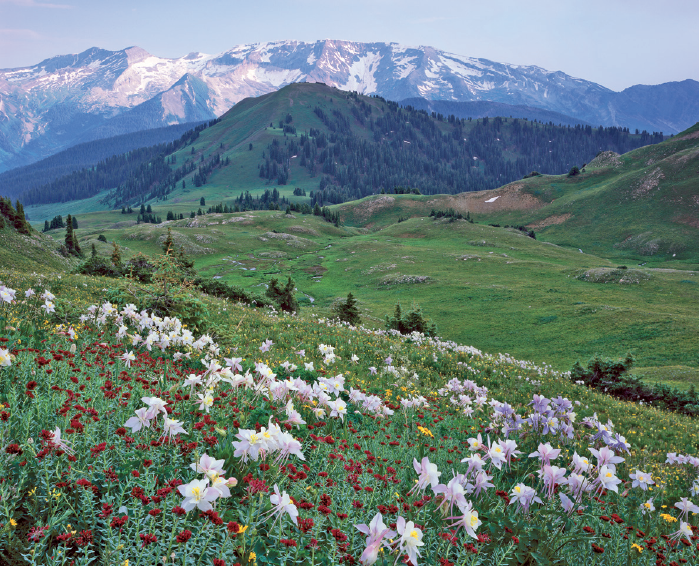
- Silver Creek Basin, Maroon Bells-Snowmass Wilderness, Colorado. Photo by Glenn Randall.
Any scenery can provide the subject for a landscape photograph, whether it’s the view from your back deck or from the top of Coit Tower or from a remote mountaintop a three-day hike away. Yet it’s these latter-most moments of wild beauty with their quality of immensity that recalls to the viewer their relative size in the universe. This (often overwhelming) feeling is the visual peak experience. There’s more to creating images that reproduce these experiences than a good photographic eye for composition and an attractive subject; to truly re-create the majesty of a scene, there are considerations: understanding light and shadow, as well as a comprehension of the elements that make interesting, eye-catching composition are important, but so too is understanding the science of the land and the cultural psychology of how we view our surroundings.
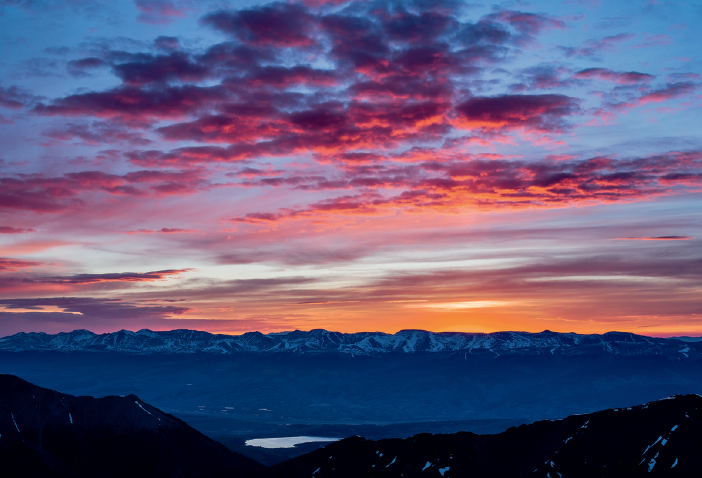
- Summit of La Plata Peak, San Isabel National Forest, Colorado. Photo by Glenn Randall.
There is an evolutionary imperative that exists in the subconscious of every sentient being, from ants to humans. Call it a sixth sense or a biological clock, but we all have an urgency for self-preservation and the perpetuation of our species that accounts for an aspect of our propensity to find beauty in impressive wilderness landscapes. Generally we are drawn to those landscapes that indicate elements beneficial to our survival, such as water, shelter, and the impression of bounty. Not that images of sweeping, lifeless dunes or the vastness of space aren’t appealing; often the play of colors, shadow, and light, whether or not it directly represents our subconscious need for survival, is appealing to the eye and our sense of the dramatic magnificence of the universe. In fact, some of the most epic shots in Randall’s book are impressive skyscapes of the Milky Way at night.
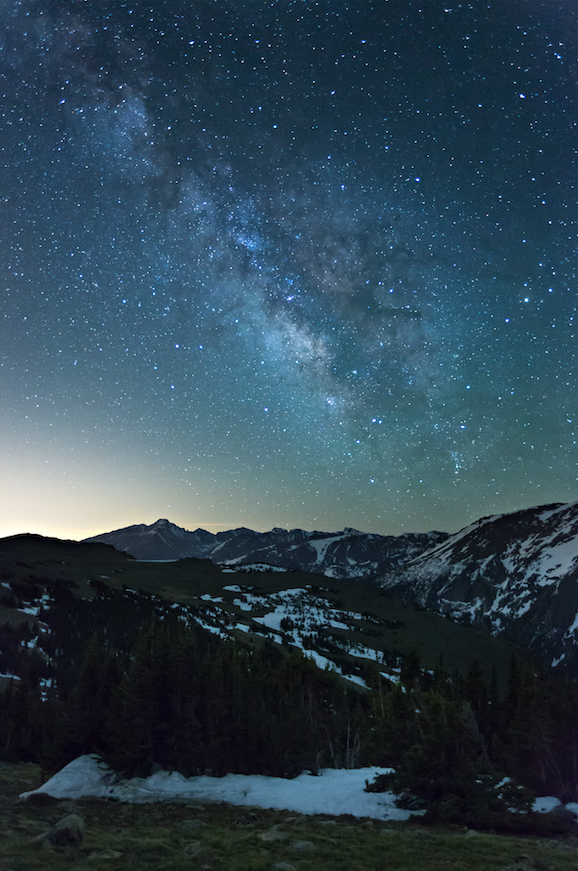
Rocky Mountain National Park, Colorado. Photo by Glenn Randall.
How do we find these visual peak experiences for ourselves—and once discovered and experienced, how do we photograph these vistas to re-create the experience for the viewer? This is one of the main tasks of art: finding a subject that represents the artist’s interpretation of our existence, and capturing the essence of that concept to convey its intricacies to the viewer. The Art, Science, and Craft of Great Landscape Photography is an interesting guide that will help landscape photographers identify this moment and reproduce the visual peak experience. Find a reason to become obsessed with views—and discover how to transfer your peak visual experiences to your photography most efficiently.
Discover your own peak experiences with Glenn Randall in The Art, Science, and Craft of Great Landscape Photography. Click here to download.
By Maggie Yates, Editor, Rocky Nook




